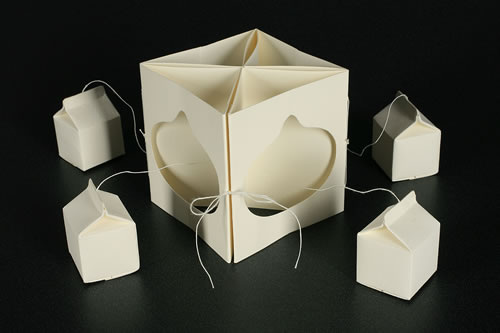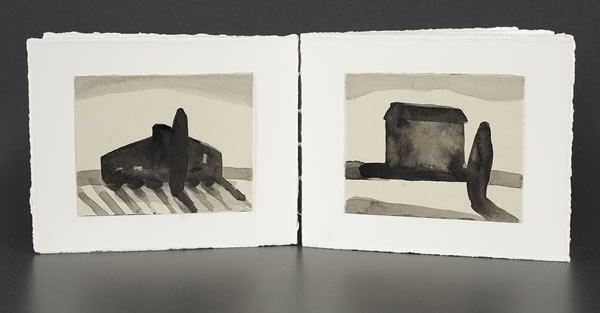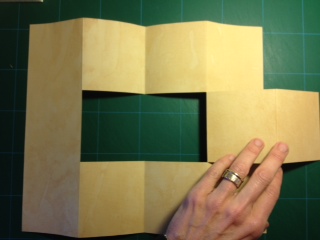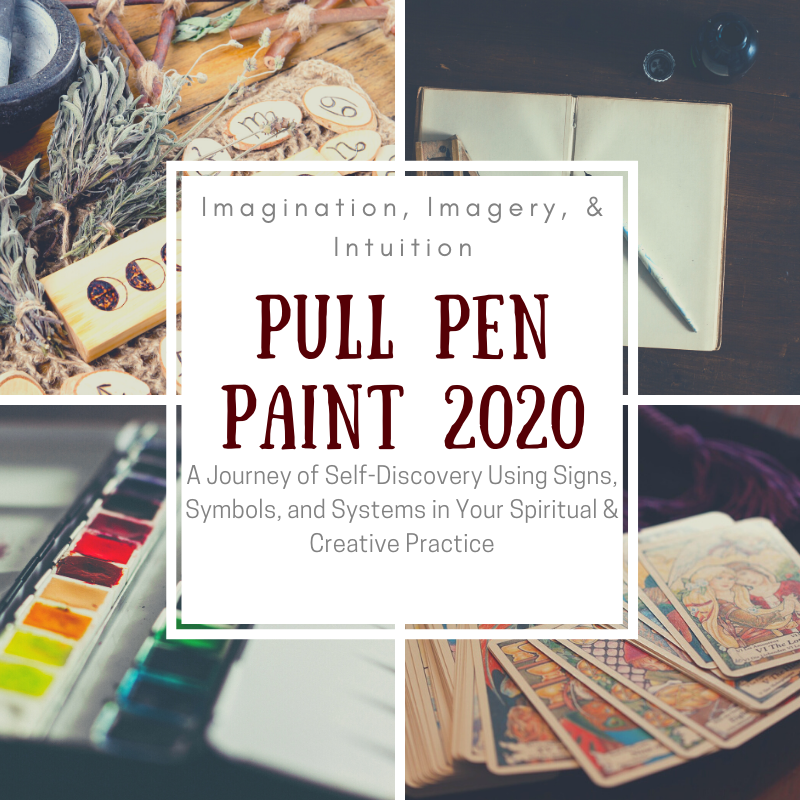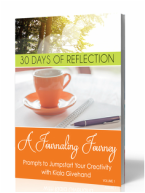 Kiala and Lyall Kiala and Lyall January 2014 If you followed the 2013 Book-in-a-Day series, then you heard the name "Lyall" many times. So I thought it was only appropriate to start this interview series with the oft mentioned, Lyall. We had a moment together during the first week of January (see photo) and it was an exquisite day. I think we were both super tired at the end of it, but neither wanted to leave. We could literally talk for hours (and we did). But this Q & A is about art and books and all the magic that can be found in both. As you read Lyall's responses to my questions, I invite you to jot down questions of your own -- we will be conducting a live 10-minute follow up where she will answer any questions you have from the Q & A. Post your questions by March 1st! and be sure to check out Lyall's short video at the end of this Q&A. KIALA: When did you begin making handmade books? LYALL: In 1993 in Florence, Italy. I was a fine art painter, but I loved the papers I found in Italy and started making “book” constructions in the spirit of Calder or Matisse. I did not know the term “book art” until many years later. KIALA: Why did you choose handmade books as a mode of artistic expression? LYALL: For me, book art has become an ideal medium for bringing together my painting/image-making and writing worlds. It also satisfies my love for The Small (the intimate art/reading experience) as well as my love for fabricating handheld objects (I made jewelry in the 90s). And, importantly, I am fascinated by how form and content can be married in book art, including the ways in which “reading” can be manipulated and directed. KIALA: Tell us about your creative process when you decide to make a book. Do you begin with content or structure, or somewhere else? LYALL: Until about five years ago (when painting was still my primary art practice), in terms of book art, I was mainly interested in making unique paper/book objects, often without text. But in the last five years, book art has become my primary art practice and my work is more and more content/text-driven. This is thanks to my writing (mostly poetry) practice. I almost always have a piece of writing that becomes the catalyst for a new book art project. Also, I have become more of a believer in making editions, even if the edition size is only 3 copies. KIALA: Of all the books you’ve made, which would you describe as your favorite and why? LYALL: I had written a poem about a boy in my daughter’s class. (We are living in Florence, Italy.) My daughter told me this boy, from Sri Lanka, had never spoken a word; after six months he still didn’t seem to understand any Italian. One day we happened to be on the bus with him and his mother and in just a few minutes of observing him, I could tell there was a lot more going on than just a language issue. I kind of went into a silent panic for him, wondering if anyone at school noticed (took the time to)? Was he getting any extra help (not that I knew of)? Soon after I’d written the poem about my bus ride with him, I went to a toy store to buy a kaleidoscope, which I covered in black paper and in one end affixed a miniature book with the poem. When you look through the eyehole, the light is partially obscured, and thus so are the shifting patterns. I wanted to convey the unique beauty of how this child might encounter the world, but also how he is “obscured” by the system/structure. KIALA: You are also a painter. Can you tell us how your formal training as a fine artist influences and/or hinders your creative work when you make books? LYALL: Growing up, art was deeply valued in my family. I feel incredibly grateful to be able to experience the world and comment on it through art. The fact that I have been a painter for over twenty years, and a dancer before that, just means that I am at ease with the language(s) of art; it is what I turn to always, in times of need, of bliss, of mundanity. I also feel a responsibility in being an artist, I take seriously my job of interpreting and presenting aspects of our humanity and our history. KIALA: What are your top 5 tools/materials/resources as a book maker? LYALL: Materials/Tools: paper; image-making supplies (paint, ink); ink jet printer (I am currently setting up a small wood type letterpress studio, but I do not have access to metal type); x-acto knife; bone folder; ruler; adhesive/needle & thread. Oops, that’s 7. The thing I am focusing on these days in my work—and this is in large part thanks to Book in a Day—is the “simple gesture,” how much I can conceptually accomplish without making overly complex structures. KIALA: A lot of your work features content based on your environment -- for example, a cemetery you pass on the walk to your children’s school everyday, the art and architecture of the Italian landscape, your hometown in Virginia (USA), and on and on. Can you talk about this a little? LYALL: This goes a little bit to your question about “top resources” in my work. There are resources everywhere: if our inner life isn’t providing (or, in addition to our inner life), our environments are constantly offering up material. Then, the outer world and the inner work can meet and stimulate a fresh point of view. For instance, you mentioned the cemetery project (“The Indistinguishable Bones”). We are living just outside of Florence and one of our “neighbors” is a group home of approximately 55 transitory political refugees from all over the world. On my daily walk to take my daughters to school, I frequently encounter residents of this home; I also pass by the centuries-old local cemetery. In the 18 months since arriving in Italy, I have been researching and grappling with the complex immigration situation, keenly aware of my own privileged immigration status (my husband is Italian). The creative process around this project is too long to describe in detail, but over the course of 52 “inscriptions” printed on images of tombstones, past and present lives, including mine, become intertwined; one of the concluding inscriptions reads: “The pale, immigrant bones we leave behind will be indistinguishable.” KIALA: After journeying along with me for Book-in-a-Day 2013, you made 52 new books, but you’ve been making books for much longer than that. How many books would you say make up your total body of work? A rough estimate is okay, too. LYALL: Since most of my books have been one-of-a-kind, I don’t think my body of work is really that large. Considering how long it can take to make one single book, depending on the complexity of the structure, I definitely have produced more paintings over the last twenty years, for example. I really can’t even guess at how many books—maybe 100? (And then many of those are then editioned…) But that includes the 52 I made this year with you! KIALA: Describe your “style” as a book artist? LYALL: A teacher once said to me how it would become important for my books to start to be recognizably made by me, that they needed to have a certain “Lyall” stamp of fabrication. While this is true of my painting, I was really disappointed in this statement applied to book art because one thing I love about this medium is how each project takes me on a journey and I DON’T KNOW where I’ll end up, what kind of research I’ll be doing, where the project will lead me, or what it will look like, if it will, for example, have a kaleidoscope in it or not. Because I have a background in various forms of image-making, I enjoy having a range of possibilities to choose from. I think my projects do consistently maintain an eye on craftsmanship and careful considerations of form & content. But, ultimately, I reject my teacher’s advice; I love being diverse in this medium. KIALA: You are also a teacher. What is your favorite age group to teach? Which structure do you enjoy teaching most? LYALL: My father was a hobby magician when I was growing up and often performed in the community. I feel like teaching book art is a little like magic, only I reveal the “how.” (I would always ask him, but my father inevitably answered that a good magician never reveals the trick.) I love teaching the curious, engaged student of any age. I have done a fair amount of teaching youth thanks to my years at the SF Center for the Book, but I have enjoyed all ages. Even a tough cookie can’t ignore the magic when a stack of paper turns into a book, or when backwards letters get inked and become legible words embossed on the page. One of the most fun structures to teach, which I learned from Peter Lilenthal at SFCB, is what I call the “Treasure Map Book.” (Kiala, you call it the “Slot and Tab” in your videos, which is a great name.) I call it this because when I teach children, I don’t want them to crush the paper we have carefully rolled up (so that we can slide it through a slit, and then unroll it), and we pretend it is a very important treasure map. See Kiala’s Slot & Tab book from BIAD. KIALA: What trends are you noticing in book arts right now? LYALL: There are a lot of book artists! And more every day. This is very likely, in part, a “reaction” to our culture’s increasing distance from the physical book and a collective (and intuitive) need to preserve this object. Naturally, at this stage (in the “history of book art”), we would make “precious” versions of the book in order to draw attention to its cultural value. The boom in book art is also a function of the interdisciplinary nature of art practices (and art departments) over the last many years. KIALA: What advice would you give to someone just starting out as a book artist? LYALL: I would ask some of the questions you are asking me: Why book art? Is it the best language for what you have to say? What are the aspects you love about it? Then I would say: Get good at it, especially at the aspects you love about it. You can always abandon the “rules,” but it’s impossible to “abandon” them if you don’t know them to begin with. (This is also my philosophy regarding drawing and painting techniques.) Don’t worry about what’s trendy; be yourself, be absolutely who you are—that’s one of the most unique things you can give the world—but don’t be solipsistic; the work has to be pertinent outside of your walls or it will just be self-reflexive. KIALA: What are you working on now? LYALL: I am trying to finish up all of the editions I created for Book in a Day! I am also committed to making a new book for each month of 2014. The first book is based on a beautiful poem, Qui si va scalzi (Here one goes barefoot), by Florentine poet, Elisa Biagini. Recalling aspects of her grandmother, the text, in Italian, invokes the physical and domestic—braid of hair, face cream, stockings, underground drawers, gloves, shadows, silent hems, books, sheets, etc. These fuse with the words she uses to bring them to life so that each becomes not only the thing described, but a third, transcendent thing: the poem-life made possible by Elisa’s extreme insight and craft. This transcendent aspect is almost indescribable because it happens as if by magic (of course, she is a master at language; it only seems like magic). What Elisa Biagini does in this poem reminds me of what book art can do: bring together language and form to create a third and separate reality. For this book, I am working on how to find (via texture and materials) interesting ways to evoke some of the objects she writes about. A quick video of Lyall demonstrating how the Flexigon book works. Maybe I'll make one of these for my February Book-in-a-Day book!!! Can you see why I adore Lyall and her work? There is a very important element to her books that I believe speaks to the human condition on a Universal level. I admire how she's able to incorporate craft and content in a way that (to me) looks seamless.
Okay -- do you have questions for Lyall? Put them in the comment section here and we will try to answer them on the live follow up in March. Post questions by March 1st.
6 Comments
Gianna, thank you so much for this lovely note. I, too, am inspired by Lyall and by YOU -- your work makes me so happy and I love how you are showing up in the world with your books for kids -- LOVE LOVE LOVE it. I hope others will check out your site and the fabulous work you do: http://www.giannamarino.com/
Reply
I love Lyall's work. I also appreciate her past efforts in teaching the art to youth. She inspired my own daughter four years ago and my daughter still loves experimenting with what she learned from Lyall. It's great to share this beautiful work and I'll look forward to hearing more and learning more.
Reply
Danielle Sakamoto
2/25/2014 11:53:27 am
Brava!
Reply
Diane
2/26/2014 02:00:20 am
Thank you so much for the interesting interview of a very talented and thoughtful artist. It emphasises the need for serious intention of an artist to produce something that speaks clearly and evokes emotion in the viewer. Congratulation Lyall on work well done.
Reply
Your comment will be posted after it is approved.
Leave a Reply. |
hello friend...I'm Kiala, a student of life first and foremost. And I'm also a published poet, book binder, fountain pen collector, Life Alchemist & Intuitive Soul Guide. I make things, paint things, and write things. I love teaching & empowering women to live with intention. Please, grab a cup of your favorite warm drink, a fountain pen, and your favorite journal. Let's connect! My Articles for the StencilGirl® Blog
i'm teaching here...
journal with me
my favorite suppliesmy favorite classesI participate in the Amazon Services LLC Associates Program, an affiliate advertising program designed to provide a means for me to earn fees by linking to Amazon.com and affiliated sites.
Archives
March 2020
|




